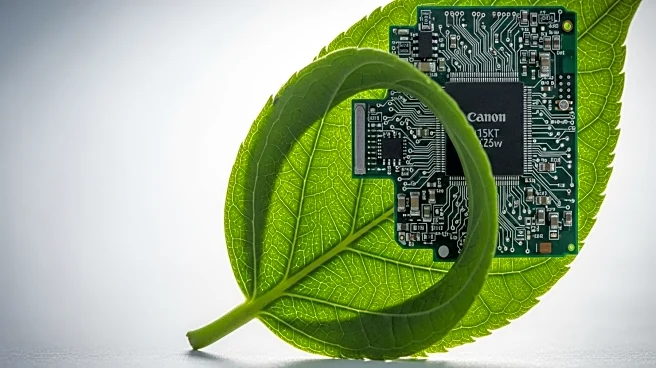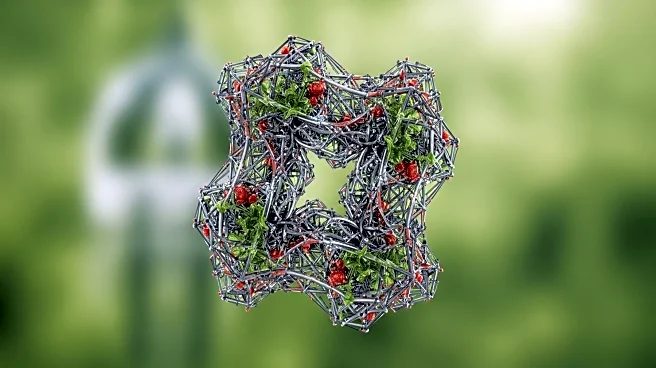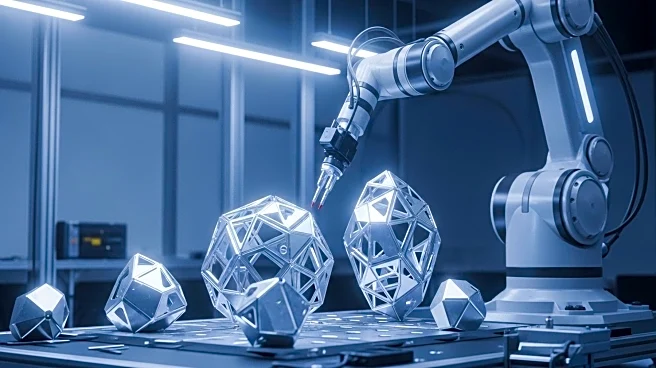What's Happening?
Researchers are exploring biohybrid systems as a sustainable approach to chemical synthesis. These systems integrate living cells with advanced materials to produce chemicals using renewable energy sources. The review highlights the use of microbial electrosynthesis (MES) and semi-artificial photosynthesis to convert carbon dioxide into valuable products. Biohybrids leverage energy sources like direct current electricity and sunlight to activate materials that transfer electrons to microbial cells, catalyzing chemical production. The technology offers a promising path for clean chemical manufacturing, addressing global energy demands and climate challenges.
Why It's Important?
Biohybrids represent a significant advancement in sustainable chemical manufacturing. By combining biology and materials science, these systems offer a cleaner and more efficient way to produce chemicals, reducing reliance on fossil fuels. The ability to convert carbon dioxide into useful products aligns with efforts to mitigate climate change and promote environmental sustainability. This technology has the potential to transform industries by providing a renewable and scalable solution for chemical production, benefiting both the environment and the economy.
What's Next?
The development of biohybrid systems will continue to focus on optimizing electron and energy transfer between materials and microbes. Researchers aim to expand the range of products that can be synthesized using these systems. Future advancements may include the integration of additional renewable energy sources, such as magnetic and thermal inputs, to enhance system efficiency. The potential for biohybrids to contribute to net-zero chemical manufacturing and environmental management will drive further research and innovation in this field.











